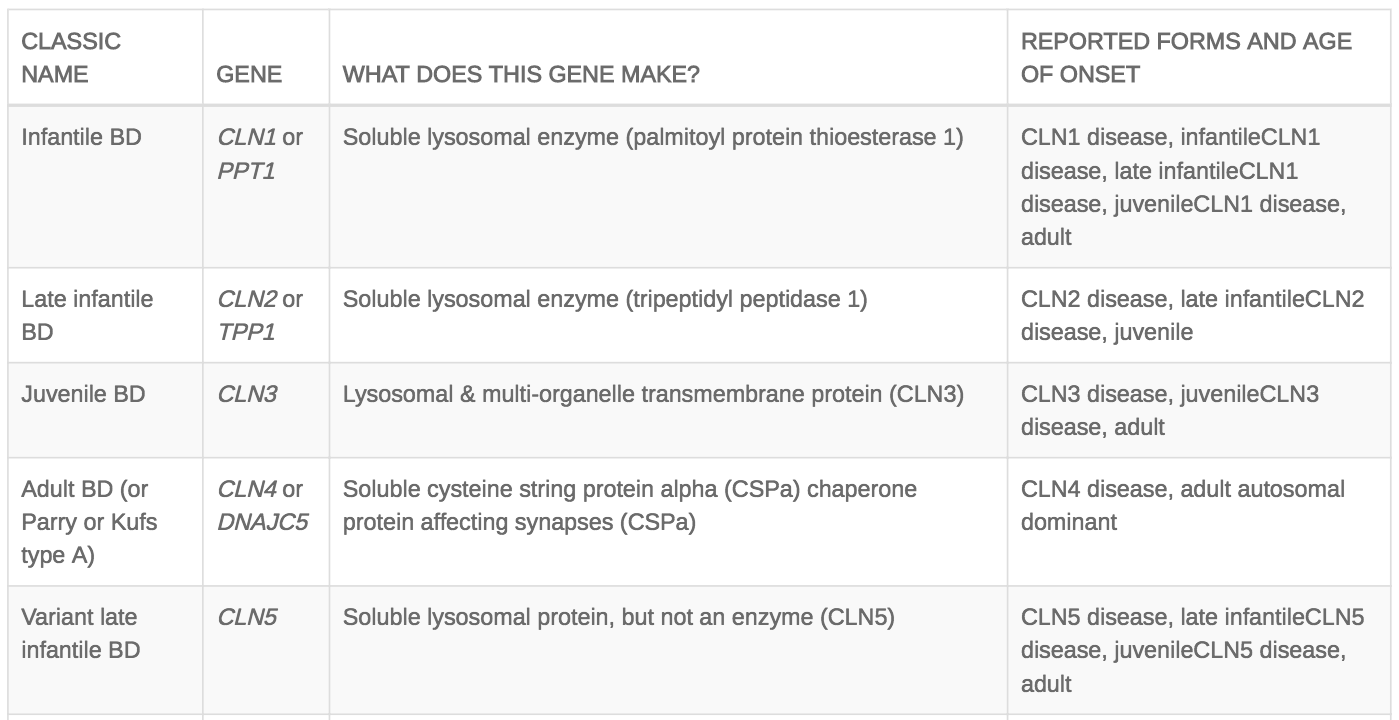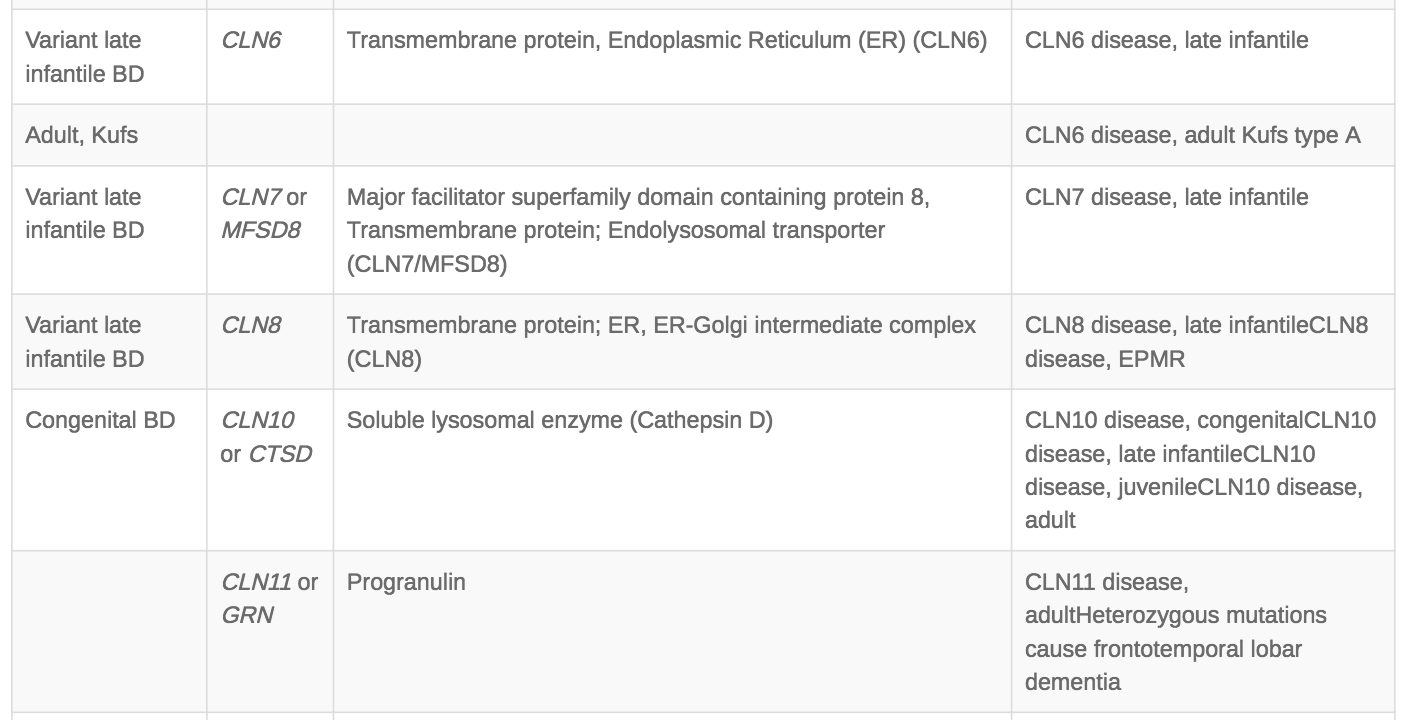What is the prognosis?
Over time, affected children suffer loss of their sight, mental impairment, worsening seizures, and progressive loss of motor skills. Eventually, those with Batten disease become bedridden, require 24-hour care, and die prematurely. How quickly symptoms develop and the length of the course of disease depends on symptom onset (classic forms of Batten).
Classic forms of Batten

What governs the age of onset?
Juvenile Batten disease was named after Frederick Batten, MA, MD, FRCP, when he reported on two sisters with the disease in 1903. 1, 2 As various forms of Batten were discovered, each was named according to its age of onset (Classic forms of Batten). This was very simple when there were only four known forms [infantile, late infantile, juvenile and adult]. However, several variant late forms were discovered complicating the matter. It wasn’t until the first genes associated with Batten disease were discovered that researchers learned that different mistakes in the same gene can result the same disease with various ages of onset. 4, 6 In other words, mistakes in the CLN1 gene can cause disease beginning in the infantile, late infantile, juvenile or adult periods (CLN Gene Defects).
CLN Gene Defects



Gene Defects: adapted from Neuronal ceroid lipofuscinosis: impact of recent genetic advances and expansion of the clinicopathologic spectrum. Curr Neurol. Neurosci Rep. 2013.
References
- Batten FE. Cerebral degeneration with symmetrical changes in the maculae in two members of a family. Trans Opth Soc UK. 1903;23:386-390.
- Batten FE. Family cerebral degeneration with macular change (so-called juvenile form of family amarautic idiocy). Q J Med. 1914;7:444-454.
- Cotman SL, Karaa A, Staropoli JF, et al. Neuronal ceroid lipofuscinosis: impact of recent genetic advances and expansion of the clinicopathologic spectrum. Curr Neurol. Neurosci Rep. 2013 Aug;13(8):366.
- International Batten Disease Consortium. Isolation of a novel gene underlying Batten disease, CLN3. Cell 82. 1995;949-957.
- NCL Resource: A Gateway for Batten Disease [Internet]. London: University College London; Available from: http://www.ucl.ac.uk/ncl/batten.html.
- Vesa J, Hellsten E, Verkruyse LA, et al. Mutations in the palmitoyl protein thioesterase gene causing infantile neuronal ceroid lipofuscinosis. Nature. 1995 Aug 17;376(6541):584-7.
Source: https://beyondbatten.org/




